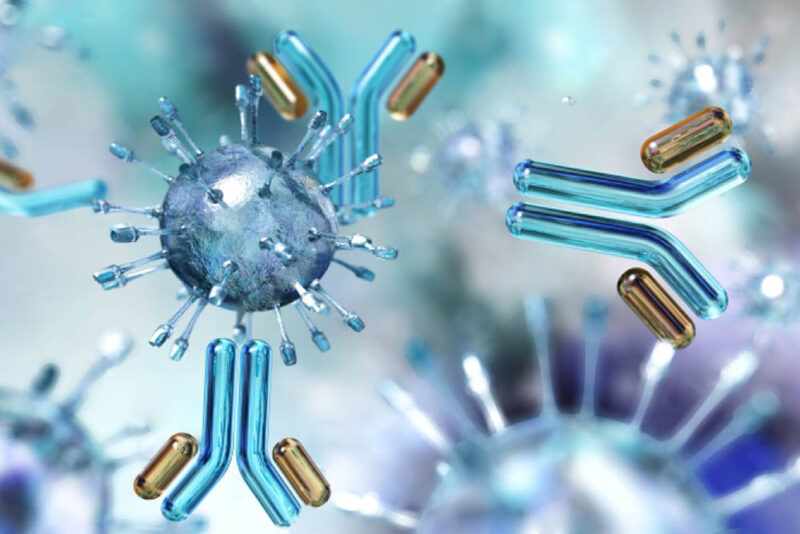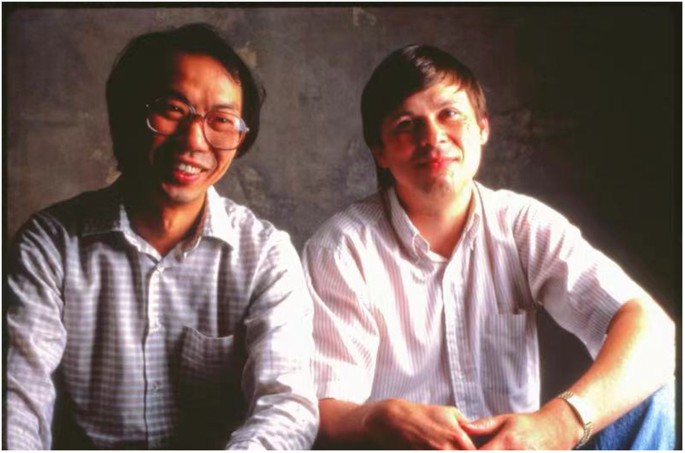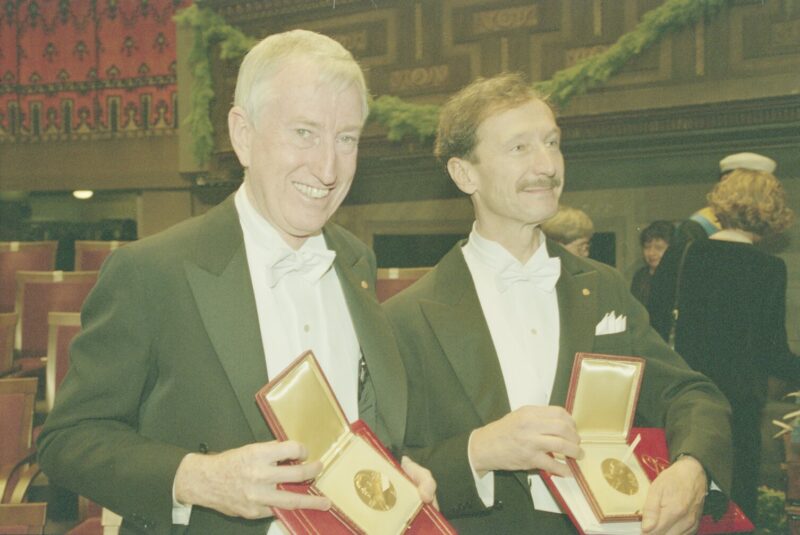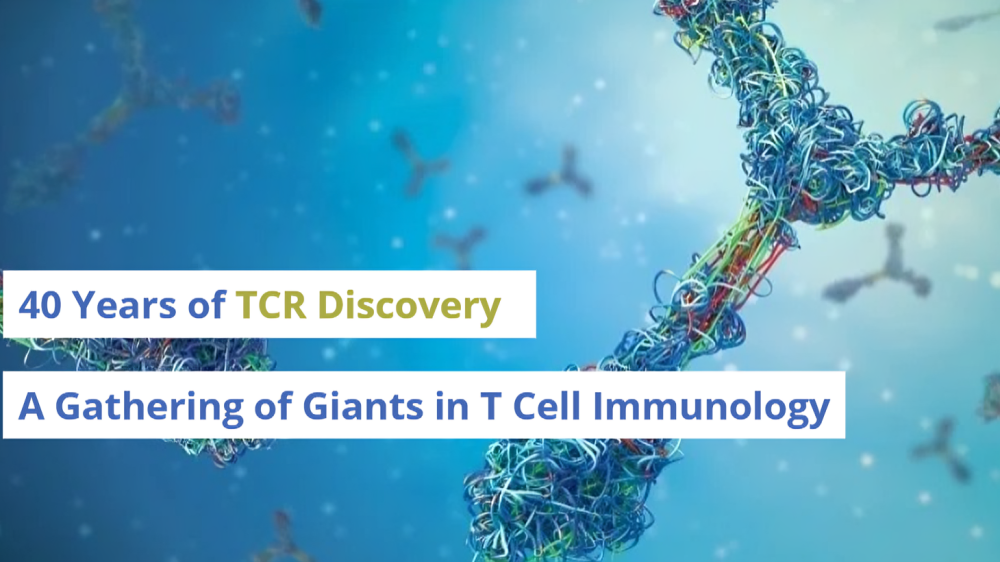This year marks the 40th anniversary of the discovery of the T cell receptor (TCR), a landmark achievement in immunology.
The discovery of the T cell receptor (TCR) marked a groundbreaking moment in immunology, revolutionizing our understanding of how the immune system recognizes and responds to pathogens. Identified in the 1980s, the TCR is a surface molecule found on T cells that binds to specific antigens presented by MHC (major histocompatibility complex) molecules on the surface of antigen-presenting cells.
In the 40 years since the first cloning of the TCR beta chain, over 75,000 articles have been published, covering a wide range of topics including central and peripheral tolerance, the molecular structure of the TCR, peptide binding mechanisms, and the intricate structures of TCRs bound to MHC molecules presenting antigenic peptides. These studies have significantly advanced our understanding of T cell biology and have led to numerous clinical studies, many of which explore therapeutic applications of TCR-targeted strategies in immunotherapy, autoimmune diseases, and cancer treatments. The body of research continues to grow, further elucidating the complexities of the TCR and its crucial role in immune responses.
What is T cell receptor (TCR)?
The T cell receptor (TCR) is a surface structure on T cells that enables them to recognize antigens. It is a disulfide-linked heterodimer composed of highly variable α and β chains in most T cells, referred to as αβ T cells. A second type of TCR, called the γδ TCR, consists of variable γ and δ chains and is expressed on a smaller subset of T cells that recognize different antigens.
The TCR is expressed at the cell membrane as a complex with invariant CD3 chains, which are essential for signaling and TCR surface expression. The CD3 complex consists of three heterodimeric pairs: CD3γε, CD3δε, and a ζ (zeta) homodimer, which play a role in signal transduction once the TCR binds to its ligand.

The αβ TCR consists of two transmembrane polypeptide chains, each bearing a variable (V) domain and a constant (C) domain. The V domain is responsible for antigen recognition and contributes to the diversity of TCRs, while the C domain stabilizes the receptor. The TCR also has a hydrophobic transmembrane region that anchors it to the cell membrane and a short cytoplasmic tail involved in signaling.
TCRs recognize foreign peptides presented by MHC (major histocompatibility complex) molecules on the surface of antigen-presenting cells (APCs). CD4+ T cells recognize MHC class II molecules (typically presenting exogenous peptides), while CD8+ T cells recognize MHC class I molecules (presenting endogenous peptides). The binding of the TCR to the peptide-MHC complex triggers intracellular signaling, leading to T cell activation, proliferation, and differentiation.
In summary, the TCR is crucial for the immune system’s ability to detect and respond to pathogens by recognizing specific peptide-MHC complexes presented by APCs. The TCR’s structure allows for diverse antigen recognition, ensuring an adaptable and effective immune response.
Historical Background and Discovery of the TCR
In the 1980s, the discovery of the T cell receptor (TCR) marked a pivotal moment in immunology, with several groundbreaking findings that laid the foundation for understanding how T cells recognize antigens.
In August 1983, the Mark Davis group announced to the immunological community gathered at the International Congress of Immunology in Kyoto, Japan, that they had successfully isolated an mRNA encoding a component of the mouse TCR.
An article describing the cloning of the TCR by Tak Wah Mak (Princess Margaret Cancer Centre, Toronto, Ontario, Canada) and one by Mark Davis and Stephen Hedrick (Stanford University School of Medicine, Stanford, CA, USA) appeared one after another on March 8, 1984 in Nature.
Within a year, the alpha chain of the TCR was cloned, and the complete structure of the TCR was ultimately revealed. In the same year, Tak Mak cloned the human TCR, described the rearrangements of genes encoding TCRs during T-cell maturation and neoplastic transformation, and published six articles in the journal Nature and three articles in the journal Cell.

Tak Wha Mak and Mark Davis in 1984
The discovery that T-cell activation is dependent on the presentation of antigens by self-MHC molecules, a phenomenon known as MHC restriction, was initially made by Rolf Zinkernagel and Peter Doherty in the 1970s.
In 1983, Rolf Zinkernagel and Peter Doherty made a fundamental discovery regarding the role of major histocompatibility complex (MHC) molecules in T cell recognition. They demonstrated that T cells do not recognize antigens directly; instead, they require antigens to be presented by MHC molecules on the surface of antigen-presenting cells (APCs).
This insight, known as the MHC restriction of T cell recognition, was critical in understanding the specificity of T cell responses and set the stage for identifying the TCR as the key receptor for antigen-MHC recognition.
On 10 December 1996 Rolf Zinkernagel and Peter Doherty received The Nobel Prize in Physiology or Medicine 1996 from King Carl XVI Gustaf of Sweden “for their discoveries concerning the specificity of the cell mediated immune defence”.

Peter C. Doherty and Rolf M. Zinkernagel after receiving their Nobel Prize medals on 10 December 1996
Building on this foundation, in 1984, James Allison and Steven Tonegawa played central roles in identifying the molecular structure of the TCR. They revealed that the TCR, like antibodies, is a disulfide-linked heterodimer consisting of two protein chains—α and β chains—each of which contains variable (V) and constant (C) domains. These chains allowed the TCR to bind to specific peptide-MHC complexes. The α and β chains together formed a receptor that could specifically recognize antigenic fragments displayed by MHC molecules on the surface of cells.
Together, these discoveries not only elucidated the molecular structure and function of the TCR but also revolutionized our understanding of immune recognition, laying the groundwork for many advances in immunology, including T cell-based therapies and cancer immunotherapy.
In 2018, the Nobel Prize in Physiology or Medicine was awarded jointly to James P. Allison and Tasuku Honjo for their groundbreaking discoveries in cancer immunotherapy, specifically for the inhibition of negative immune regulation. Both scientists independently uncovered mechanisms that prevent immune checkpoint proteins from suppressing the body’s immune response to cancer cells.
James Allison’s work focused on CTLA-4, a protein receptor on T cells that acts as a “brake” to limit immune responses. He discovered that by inhibiting CTLA-4, the immune system’s T cells could be unleashed to attack and destroy cancer cells. This research led to the development of ipilimumab, the first drug targeting CTLA-4, which became a revolutionary treatment for melanoma.
Tasuku Honjo, on the other hand, discovered PD-1, another immune checkpoint receptor on T cells, which, when activated, dampens immune responses. Honjo’s research led to the development of PD-1 inhibitors, such as nivolumab and pembrolizumab, which have shown significant clinical success in treating various cancers, including lung cancer, melanoma, and more.
Together, their discoveries revolutionized cancer treatment, offering new hope to patients with previously untreatable cancers. These therapies, now known as immune checkpoint inhibitors, have transformed the landscape of oncology, turning cancer immunotherapy into one of the most promising areas in modern medicine.
Further Reading:
History of Immunotherapy: Cancer Treatment
CAR T Cell Therapy for Cancer Treatment
